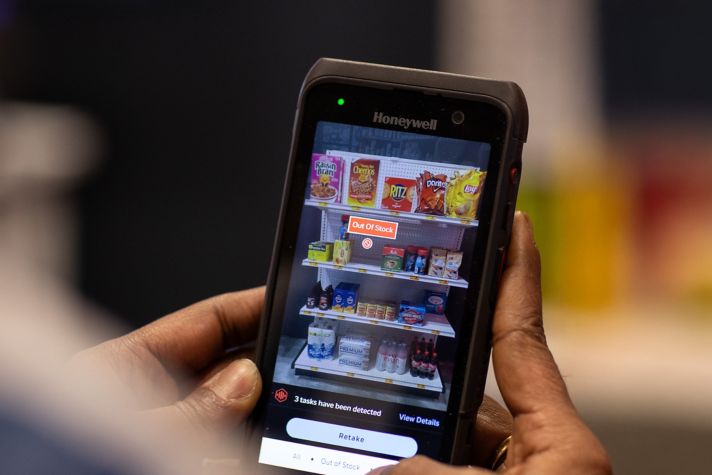Quick Service Restaurants (QSRs) errors are commonly related to poor communication lines, complex and challenging orders, language barriers, and poorly trained staff, not to mention rising labor costs. Such innovation has continually been introduced to help employees become more efficient in their jobs and communication. Self-ordering kiosks (SOKs) are one of the many advancements in QSRs.
SOKs have dramatically changed the way customers order food and the way the food reaches the customer. In the beginning, kiosk technology was considered to be a way to support the business. Many QSRs have found it to be a way to grow the business.
Brands like Panera and Chili's have embraced the trends to go with kiosks.1 Casual dining chains such as Applebee's, Chilli's and Olive Garden have incorporated table side tablets which allow the customer to order and pay, freeing up wait staff to handle more customers at a time. Trends also indicate that the kiosk can be a catalyst for faster table turnover because patrons will not need to wait for the wait staff to order or pay.2
QSR customers spend more with kiosks. Customers placing their orders tend to engage with the menu longer and spend 15% to 25% more than orders placed at the counter.2 For example, one QSR has seen up to a 6% boost in annual sales due to the kiosk.3 A study in the Journal of Retailing and Consumers Services, shown that when a customer uses a touchscreen device, they are more likely to make a "hedonic" purchase. Meaning the novelty and fun generated by finger movement create an experiential and affective feeling, aligning with the playful and emotional nature of allowing the consumer to feel pleasure, fun, and enjoyment from buying the product.4
In-store kiosks only account for between 30-40% of total sales. To improve sales even further, many QSRs are adopting kiosk technology for the drive-thru. These kiosks will be able to remember the customer and their order preferences. Let's look at McDonald's as a case study for what is happening in the QSRs today.
McDonald's - an early adopter - is expanding their use of kiosks -. Kiosks allow the customer to easily customize their order and move beyond the "one-burger-fits-all method" and choose to have "table service"—having workers bring their order to the table as they sit and wait.
As recently promoted within the press, McDonald’s, as of 2020, in-store self-service ordering kiosks were implemented in all US McDonald’s locations.1 The in-store self-ordering kiosk was just the first step for McDonald's.
As a result of the COVID-19 pandemic, consumer habits have shifted toward a drive-thru touchless experience in the QSR. McDonald's is using technology to help drive a consistent, speedy and straightforward drive-thru and pickup experience. The McDonalds digital engine is a single suite of offerings that extends to all the digitally-enabled customer touchpoints that include the in-store kiosk to table service to a digital drive-thru.5 Currently, they are testing:
- Easy Ordering and Payment ID make the ordering process more accessible and more streamlined with automated ordering and payments made by identifying customers at the display screen.
- Express Pick Up alerts crew to prep orders when customers are nearby, while dedicated parking spaces ensure fast pick up.
- Express Drive-Thru lets customers using the app skip the line and get their food even faster.5 The lane could feature a conveyor belt that brings food to the lane.8
- On-the-Go is a McDonald's with a smaller restaurant footprint that would focus exclusively on efficiency, featuring drive-thru, takeaway, and delivery with limited or no dine-in seating.
McDonald's is actively testing automated order-taking by bringing artificial intelligence (AI) to their new drive-thru touchscreen kiosks. If a customer opts in, this technology solution recognizes the license plate of the customer. It can use the information to make AI-based recommendations of menu items based on previous order history. The solution can also make product recommendations based on factors such as weather, time of day, wait time and item popularity. For example, a menu board may suggest a breakfast sandwich served on a biscuit in the American South where they are popular, but an English muffin elsewhere.6
The customer can easily pick from a range of products on the touch screen. If the customer has unique tastes or complex orders, they can make their choices in just a few seconds. Customers can follow the prompts to the payment screen, which can be processed by the kiosk or internally by an employee.
The kiosk instantly processes all customer interactions such as items added, items revoked, order total, change to give, time of order and order number. QSRs can test different messages, new promotional material, videos, and images to engage with their patrons.
Like the in-store boost is the size of orders, the recommendation algorithms have demonstrated increases in the order size.5 The kiosks have also been responsible for helping McDonald's reduce the average drive-thru by 30 seconds. Faster ordering means more customers and more transactions.7, 8
The new drive-thru automated ordering kiosks are not without their challenges. For instance, noise—children in the car or wind blowing outside—can create difficulty for the AI system to decipher what is being said by the customer.6
How Honeywell Compact OEM 2D Barcodes Compact Scan Engines are Helping Make QSR Contactless Drive-thru Kiosks a Reality
At Honeywell Advance Sensing Technologies (AST), formerly known as Sensing & Internet of Things, we have taken a lead role in designing, engineering, and manufacturing Compact 2D Barcode Scan Engines and Barcode Scan Modules. These scan engines help make today's contactless and touchless experience possible in a wide variety of industry applications. Honeywell optical scan engines are found throughout the world in many use cases and applications
Honeywell optical scan engines are found in many of the QSR drive-thru kiosks and applications. Our outdoor scan engines need to durable, secure and weather-resistant to extreme temperatures and lighting conditions. Take, for example, the CM5680 and CM2180, part of the CM Series 2D Imager Modules.
CM Series 2D Imager Modules. As part of the CM Series, the CM5680 is a very popular, very popular high-performance model. It has both standard range and wide-angle versions. And the CM2180 has a longer scan range and a wider temperature range.
The CM Series Compact 2D Imager Modules provide a self-contained 1D and 2D barcode scanning solution for decoding mobile phone screens or paper. It offers many differentiating features that simplify installation (e.g., cable connector compatibility and more mounting options). It enhances performance (e.g., wide-angle and megapixel optics options, a wider choice of non-laser aimers and illumination, enhanced scan time and print contrast, and higher operating temperature range). Its unique design simplifies installation and deployment for a wide range of kiosk applications.
Key features include:
- Compact size. The cable connector extends off the side of the device instead of the back, reducing the depth and simplifying integration.
- Enhances durability. A slider bracket holds the customer-supplied micro-USB cable securely in place so it does not become disconnected quickly.
- Simplifies integration. Ten mounting holes, all-in-one design, compact size, connector compatibility and slider bracket expedite integration.
- Enhances performance. Choice of red or white LED illumination. Select white to expedite decoding of colored barcodes and for customer-facing applications.
- Four optics options. Select the performance your application requires: Standard or Enhanced (Standard Range) or Specialized (Mega Pixel or Wide Angle).
- Withstands extreme temperatures. Industrial-grade technology allows the imager module to tolerate temperatures from -30°C to 60°C [-22°F to 140°F].
With decades of experience in scanning and decoding, Honeywell's broad portfolio and engineering expertise help design engineers solve their technical and performance challenges and select the right offering for their specific scanning application. Get in touch with us to discover the potential of the Honeywell barcode scanning OEM solutions. For more information, visit automation.honeywell.com or Contact a Honeywell Solutions Expert today! Call 1-800-934-3163.
_____________________________________________
1McDonald's Says Goodbye Cashiers, Hello Kiosks
2Why McDonald's is supersizing its tech spending
3One big reason why McDonald's is adding self-serve kiosks in a hurry
4Getting in touch with your thinking style: How touchscreens influence purchase
5McDonald's drive-thru AI knows what you want before you order
6 McDonald's and other chains are giving their drive-thrus the Jetsons treatment
7McDonalds Drive-Thru Kiosk Designs – Deployed
9 McDonald's and other chains are giving their drive-thrus the Jetsons treatment






